LIGHTSAIL CLASSICS

Classics provide invaluable first-person historical context, teach new vocabulary, and develop critical thinking skills. And, perhaps most importantly, they comprise the bedrock of Western thought and discovery in subjects from philosophy, science, history, law, government, art, and more. Classics can spark imagination, deliver insightful moral messages, and prepare students for higher education.
LightSail has brought 3,500+ of the most widely acclaimed fiction and non-fiction works in history together in LightSail Classics. This curated collection of books represents the most relevant literature to Western culture, from Ancient Greece, to Medieval England, to Revolutionary Russia, to Progressive America. This collection encompasses the most thought-provoking and delightful works for readers, preschool through adult, all enhanced with LightSail’s seven layers of educational features, like full dictionary integration and action clips.

Click on a classic to experience . . .
. . . how children on LightSail answer one of the thousands of thought provoking questions.
Our questions are designed to spark critical thinking and a deeper analysis of the text than just reading alone. All our questions are written by highly experienced educators and provide children with a framework for understanding classics, no matter the genre.
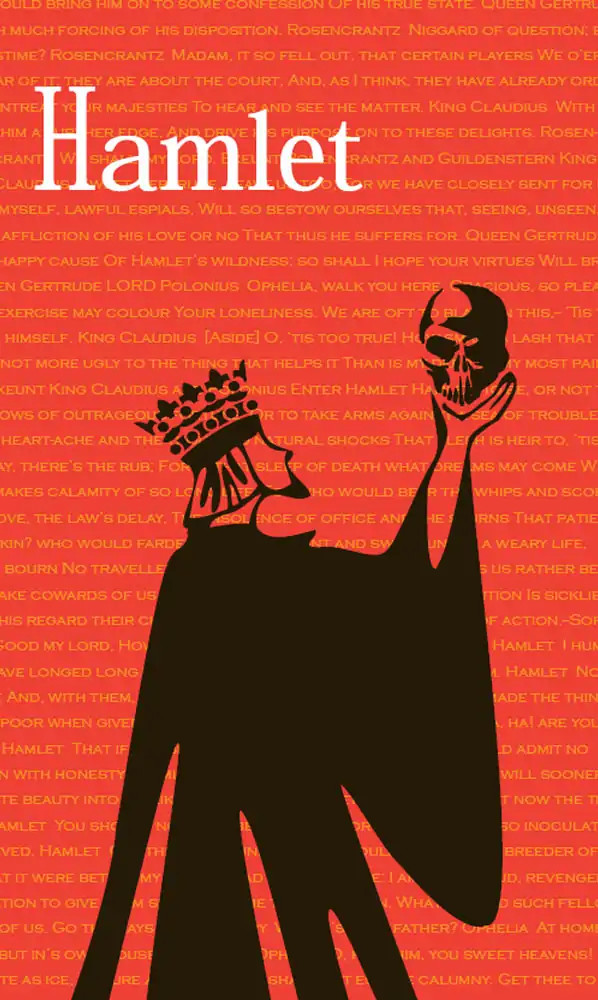

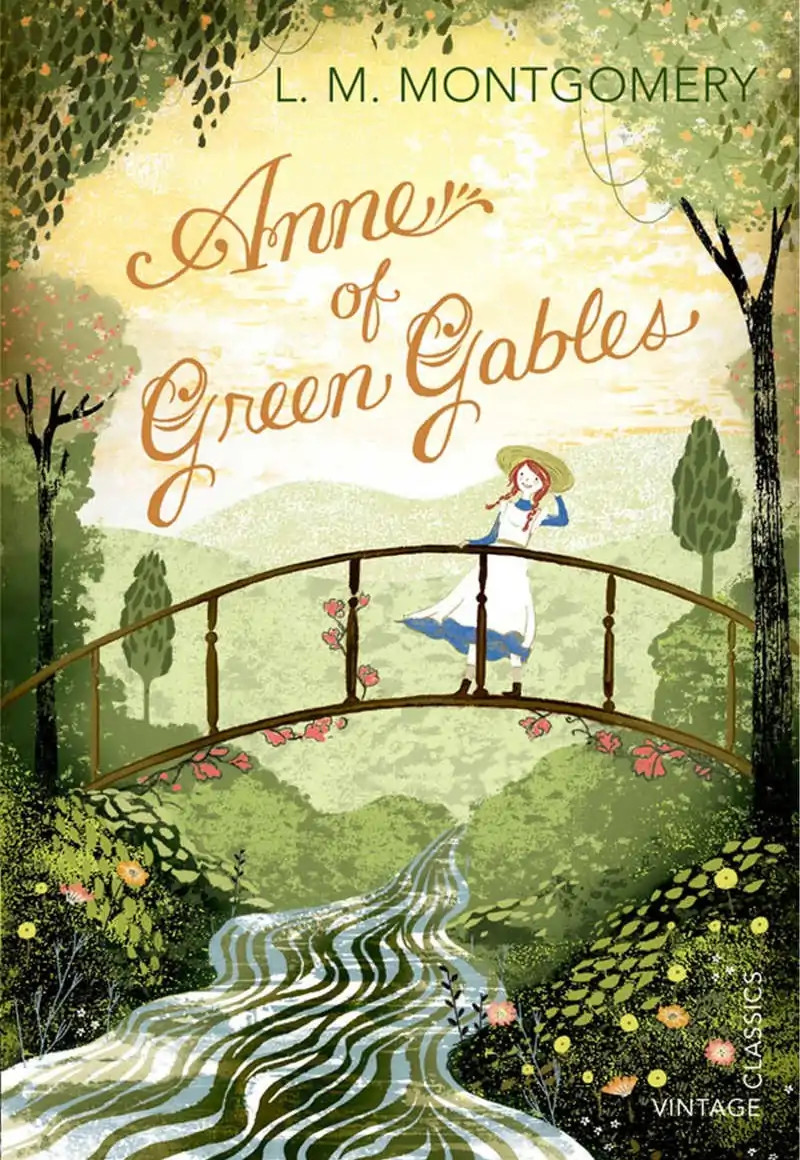


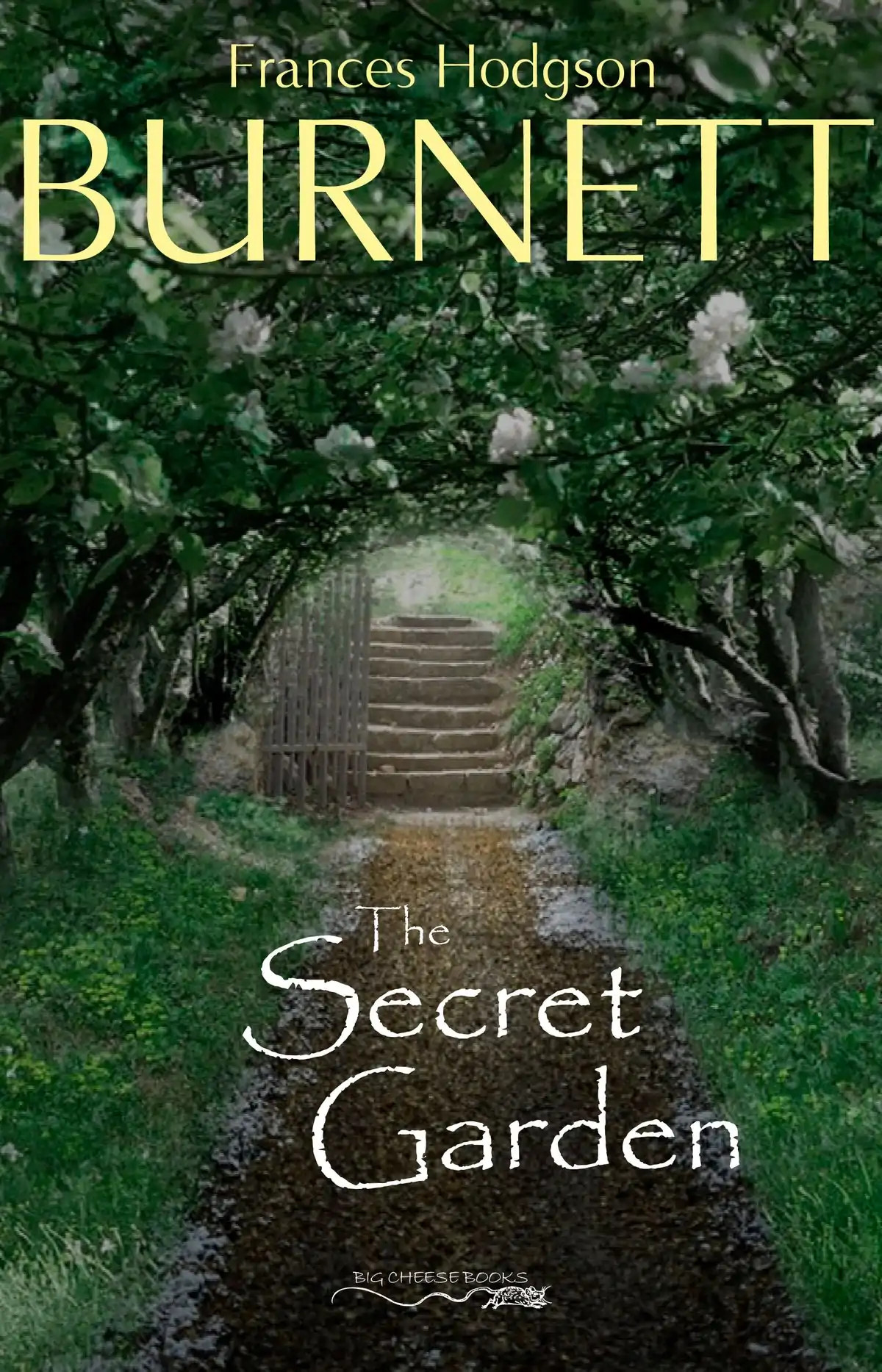
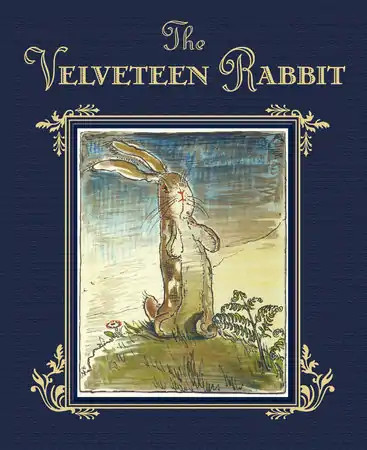
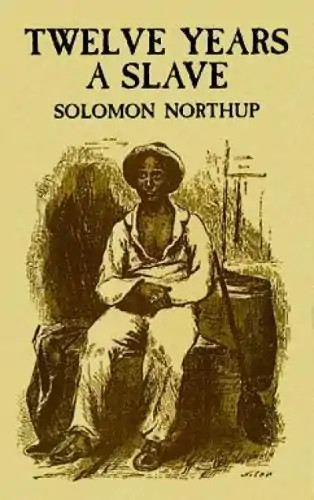
Sample Book Questions
Hamlet
Author: William Shakespeare
A Tale of Two Cities
Author: Charles Dickens
Anne of Green Gables
Author: L.M. Montgomery
Pride and Prejudice
Author: Jane Austen
Included in the book:
8 Multiple Choice Questions
- MIT, Location 2%
- SNE, Location 3%
- INF, Location 6%
- VOC, Location 18%
- VOC, Location 44%
- STR, Location 51%
- INF, Location 72%
- STR, Location 90%
3 Short Response Questions
- INF, Location 5%
- SNE, Location 34%
- SNE, Location 60%
- INF, Location 77%
- STR, Location 97%
Romeo and Juliet
Author: William Shakespeare
The Secret Garden
Author: Frances Hodgson Burnett
The Velveteen Rabbit
Author: Margery Williams Bianco
Short Response Question - RL.1, Location 100%
RL. 1 Key Ideas And Details
Quote accurately from a text when explaining what the text says explicitly and when drawing inferences from the text.
Question:
How does the final act emphasize the theme of death? Use examples from the text to support your thinking.
-
Above Grade - Example Answer
Death has been a pervasive theme throughout the entire play. Hamlet has constantly pondered the mysteries of mortality and the afterlife. In the final act, this theme is reinforced when, while watching the gravedigger, Hamlet happens upon the skull of Yorick, the king's jester, and as Hamlet states, "a fellow of infinite jest." Hamlet marvels that all of Yorick's verve and humor are now reduced to a skull buried in the ground. Hamlet then remarks to Horatio on the common fate of all humanity to return to the dust. These musings seem to foreshadow the avalanche of death that will occupy the rest of the play. In terms of sheer body count, the final act of the play is saturated with death. This serves as a cementing of all the philosophizing about mortality that has happened throughout the play.
Rationale: This answer meets the demands of the task and uses specific and correct textual evidence to support an argument. Using sophisticated vocabulary, this answer demonstrates full comprehension and picks up on nuances of the text.
-
On Grade - Example Answer
The final act of the play is preoccupied with death. Virtually every major character is dead by the conclusion of the action. Deaths occur onstage in poisonings and bloody battles, and they also occur offstage for Rosencrantz and Guildenstern. However, the prelude to all this carnage seems to be Hamlet's quiet musings on the skull of the former court jester. While looking at this skull, Hamlet marvels that such an infinite variety of humanity all proceed to a common fate. It is this reflection about the inevitability of mortality that suffuses the entire play.
Rationale: This answer meets the demands of the task, citing correct textual evidence to help support an argument.
-
Approaching Grade - Example Answer
The theme of death is reinforced through the sheer number of deaths that happen in the final act. All of the major characters are dead by the end. Also, Hamlet continues to philosophize about the inevitability of death.
Rationale: This answer provides partial textual evidence, but it does not fully answer the question. There is not enough evidence to demonstrate complete understanding of the given task.
-
Below Grade - Example Answer
Death is a major theme in the final act because everyone dies.
Rationale: This answer does not provide textual evidence and does not answer the question. There is not enough evidence to prove comprehension of the given task.
- sympathy.
- contempt.
- jealousy.
- love.
Short Response Question - RL.1, Location 100%
RL. 1 Key Ideas And Details
Quote accurately from a text when explaining what the text says explicitly and when drawing inferences from the text.
Question:
How does the final act emphasize the theme of death? Use examples from the text to support your thinking.
-
Above Grade - Example Answer
Death has been a pervasive theme throughout the entire play. Hamlet has constantly pondered the mysteries of mortality and the afterlife. In the final act, this theme is reinforced when, while watching the gravedigger, Hamlet happens upon the skull of Yorick, the king's jester, and as Hamlet states, "a fellow of infinite jest." Hamlet marvels that all of Yorick's verve and humor are now reduced to a skull buried in the ground. Hamlet then remarks to Horatio on the common fate of all humanity to return to the dust. These musings seem to foreshadow the avalanche of death that will occupy the rest of the play. In terms of sheer body count, the final act of the play is saturated with death. This serves as a cementing of all the philosophizing about mortality that has happened throughout the play.
Rationale: This answer meets the demands of the task and uses specific and correct textual evidence to support an argument. Using sophisticated vocabulary, this answer demonstrates full comprehension and picks up on nuances of the text.
-
On Grade - Example Answer
The final act of the play is preoccupied with death. Virtually every major character is dead by the conclusion of the action. Deaths occur onstage in poisonings and bloody battles, and they also occur offstage for Rosencrantz and Guildenstern. However, the prelude to all this carnage seems to be Hamlet's quiet musings on the skull of the former court jester. While looking at this skull, Hamlet marvels that such an infinite variety of humanity all proceed to a common fate. It is this reflection about the inevitability of mortality that suffuses the entire play.
Rationale: This answer meets the demands of the task, citing correct textual evidence to help support an argument.
-
Approaching Grade - Example Answer
The theme of death is reinforced through the sheer number of deaths that happen in the final act. All of the major characters are dead by the end. Also, Hamlet continues to philosophize about the inevitability of death.
Rationale: This answer provides partial textual evidence, but it does not fully answer the question. There is not enough evidence to demonstrate complete understanding of the given task.
-
Below Grade - Example Answer
Death is a major theme in the final act because everyone dies.
Rationale: This answer does not provide textual evidence and does not answer the question. There is not enough evidence to prove comprehension of the given task.
- sympathy.
- contempt.
- jealousy.
- love.
Short Response Question - RL.1, Location 100%
RL. 1 Key Ideas And Details
Quote accurately from a text when explaining what the text says explicitly and when drawing inferences from the text.
Question:
How does the final act emphasize the theme of death? Use examples from the text to support your thinking.
-
Above Grade - Example Answer
Death has been a pervasive theme throughout the entire play. Hamlet has constantly pondered the mysteries of mortality and the afterlife. In the final act, this theme is reinforced when, while watching the gravedigger, Hamlet happens upon the skull of Yorick, the king's jester, and as Hamlet states, "a fellow of infinite jest." Hamlet marvels that all of Yorick's verve and humor are now reduced to a skull buried in the ground. Hamlet then remarks to Horatio on the common fate of all humanity to return to the dust. These musings seem to foreshadow the avalanche of death that will occupy the rest of the play. In terms of sheer body count, the final act of the play is saturated with death. This serves as a cementing of all the philosophizing about mortality that has happened throughout the play.
Rationale: This answer meets the demands of the task and uses specific and correct textual evidence to support an argument. Using sophisticated vocabulary, this answer demonstrates full comprehension and picks up on nuances of the text.
-
On Grade - Example Answer
The final act of the play is preoccupied with death. Virtually every major character is dead by the conclusion of the action. Deaths occur onstage in poisonings and bloody battles, and they also occur offstage for Rosencrantz and Guildenstern. However, the prelude to all this carnage seems to be Hamlet's quiet musings on the skull of the former court jester. While looking at this skull, Hamlet marvels that such an infinite variety of humanity all proceed to a common fate. It is this reflection about the inevitability of mortality that suffuses the entire play.
Rationale: This answer meets the demands of the task, citing correct textual evidence to help support an argument.
-
Approaching Grade - Example Answer
The theme of death is reinforced through the sheer number of deaths that happen in the final act. All of the major characters are dead by the end. Also, Hamlet continues to philosophize about the inevitability of death.
Rationale: This answer provides partial textual evidence, but it does not fully answer the question. There is not enough evidence to demonstrate complete understanding of the given task.
-
Below Grade - Example Answer
Death is a major theme in the final act because everyone dies.
Rationale: This answer does not provide textual evidence and does not answer the question. There is not enough evidence to prove comprehension of the given task.
- sympathy.
- contempt.
- jealousy.
- love.
Short Response Question - RL.1, Location 100%
RL. 1 Key Ideas And Details
Quote accurately from a text when explaining what the text says explicitly and when drawing inferences from the text.
Question:
How does the final act emphasize the theme of death? Use examples from the text to support your thinking.
-
Above Grade - Example Answer
Death has been a pervasive theme throughout the entire play. Hamlet has constantly pondered the mysteries of mortality and the afterlife. In the final act, this theme is reinforced when, while watching the gravedigger, Hamlet happens upon the skull of Yorick, the king's jester, and as Hamlet states, "a fellow of infinite jest." Hamlet marvels that all of Yorick's verve and humor are now reduced to a skull buried in the ground. Hamlet then remarks to Horatio on the common fate of all humanity to return to the dust. These musings seem to foreshadow the avalanche of death that will occupy the rest of the play. In terms of sheer body count, the final act of the play is saturated with death. This serves as a cementing of all the philosophizing about mortality that has happened throughout the play.
Rationale: This answer meets the demands of the task and uses specific and correct textual evidence to support an argument. Using sophisticated vocabulary, this answer demonstrates full comprehension and picks up on nuances of the text.
-
On Grade - Example Answer
The final act of the play is preoccupied with death. Virtually every major character is dead by the conclusion of the action. Deaths occur onstage in poisonings and bloody battles, and they also occur offstage for Rosencrantz and Guildenstern. However, the prelude to all this carnage seems to be Hamlet's quiet musings on the skull of the former court jester. While looking at this skull, Hamlet marvels that such an infinite variety of humanity all proceed to a common fate. It is this reflection about the inevitability of mortality that suffuses the entire play.
Rationale: This answer meets the demands of the task, citing correct textual evidence to help support an argument.
-
Approaching Grade - Example Answer
The theme of death is reinforced through the sheer number of deaths that happen in the final act. All of the major characters are dead by the end. Also, Hamlet continues to philosophize about the inevitability of death.
Rationale: This answer provides partial textual evidence, but it does not fully answer the question. There is not enough evidence to demonstrate complete understanding of the given task.
-
Below Grade - Example Answer
Death is a major theme in the final act because everyone dies.
Rationale: This answer does not provide textual evidence and does not answer the question. There is not enough evidence to prove comprehension of the given task.
- sympathy.
- contempt.
- jealousy.
- love.
Short Response Question - RL.1, Location 100%
RL. 1 Key Ideas And Details
Quote accurately from a text when explaining what the text says explicitly and when drawing inferences from the text.
Question:
How does the final act emphasize the theme of death? Use examples from the text to support your thinking.
-
Above Grade - Example Answer
Death has been a pervasive theme throughout the entire play. Hamlet has constantly pondered the mysteries of mortality and the afterlife. In the final act, this theme is reinforced when, while watching the gravedigger, Hamlet happens upon the skull of Yorick, the king's jester, and as Hamlet states, "a fellow of infinite jest." Hamlet marvels that all of Yorick's verve and humor are now reduced to a skull buried in the ground. Hamlet then remarks to Horatio on the common fate of all humanity to return to the dust. These musings seem to foreshadow the avalanche of death that will occupy the rest of the play. In terms of sheer body count, the final act of the play is saturated with death. This serves as a cementing of all the philosophizing about mortality that has happened throughout the play.
Rationale: This answer meets the demands of the task and uses specific and correct textual evidence to support an argument. Using sophisticated vocabulary, this answer demonstrates full comprehension and picks up on nuances of the text.
-
On Grade - Example Answer
The final act of the play is preoccupied with death. Virtually every major character is dead by the conclusion of the action. Deaths occur onstage in poisonings and bloody battles, and they also occur offstage for Rosencrantz and Guildenstern. However, the prelude to all this carnage seems to be Hamlet's quiet musings on the skull of the former court jester. While looking at this skull, Hamlet marvels that such an infinite variety of humanity all proceed to a common fate. It is this reflection about the inevitability of mortality that suffuses the entire play.
Rationale: This answer meets the demands of the task, citing correct textual evidence to help support an argument.
-
Approaching Grade - Example Answer
The theme of death is reinforced through the sheer number of deaths that happen in the final act. All of the major characters are dead by the end. Also, Hamlet continues to philosophize about the inevitability of death.
Rationale: This answer provides partial textual evidence, but it does not fully answer the question. There is not enough evidence to demonstrate complete understanding of the given task.
-
Below Grade - Example Answer
Death is a major theme in the final act because everyone dies.
Rationale: This answer does not provide textual evidence and does not answer the question. There is not enough evidence to prove comprehension of the given task.
- sympathy.
- contempt.
- jealousy.
- love.
Short Response Question - RL.1, Location 100%
RL. 1 Key Ideas And Details
Quote accurately from a text when explaining what the text says explicitly and when drawing inferences from the text.
Question:
How does the final act emphasize the theme of death? Use examples from the text to support your thinking.
-
Above Grade - Example Answer
Death has been a pervasive theme throughout the entire play. Hamlet has constantly pondered the mysteries of mortality and the afterlife. In the final act, this theme is reinforced when, while watching the gravedigger, Hamlet happens upon the skull of Yorick, the king's jester, and as Hamlet states, "a fellow of infinite jest." Hamlet marvels that all of Yorick's verve and humor are now reduced to a skull buried in the ground. Hamlet then remarks to Horatio on the common fate of all humanity to return to the dust. These musings seem to foreshadow the avalanche of death that will occupy the rest of the play. In terms of sheer body count, the final act of the play is saturated with death. This serves as a cementing of all the philosophizing about mortality that has happened throughout the play.
Rationale: This answer meets the demands of the task and uses specific and correct textual evidence to support an argument. Using sophisticated vocabulary, this answer demonstrates full comprehension and picks up on nuances of the text.
-
On Grade - Example Answer
The final act of the play is preoccupied with death. Virtually every major character is dead by the conclusion of the action. Deaths occur onstage in poisonings and bloody battles, and they also occur offstage for Rosencrantz and Guildenstern. However, the prelude to all this carnage seems to be Hamlet's quiet musings on the skull of the former court jester. While looking at this skull, Hamlet marvels that such an infinite variety of humanity all proceed to a common fate. It is this reflection about the inevitability of mortality that suffuses the entire play.
Rationale: This answer meets the demands of the task, citing correct textual evidence to help support an argument.
-
Approaching Grade - Example Answer
The theme of death is reinforced through the sheer number of deaths that happen in the final act. All of the major characters are dead by the end. Also, Hamlet continues to philosophize about the inevitability of death.
Rationale: This answer provides partial textual evidence, but it does not fully answer the question. There is not enough evidence to demonstrate complete understanding of the given task.
-
Below Grade - Example Answer
Death is a major theme in the final act because everyone dies.
Rationale: This answer does not provide textual evidence and does not answer the question. There is not enough evidence to prove comprehension of the given task.
- sympathy.
- contempt.
- jealousy.
- love.
Short Response Question - RL.1, Location 100%
RL. 1 Key Ideas And Details
Quote accurately from a text when explaining what the text says explicitly and when drawing inferences from the text.
Question:
How does the final act emphasize the theme of death? Use examples from the text to support your thinking.
-
Above Grade - Example Answer
Death has been a pervasive theme throughout the entire play. Hamlet has constantly pondered the mysteries of mortality and the afterlife. In the final act, this theme is reinforced when, while watching the gravedigger, Hamlet happens upon the skull of Yorick, the king's jester, and as Hamlet states, "a fellow of infinite jest." Hamlet marvels that all of Yorick's verve and humor are now reduced to a skull buried in the ground. Hamlet then remarks to Horatio on the common fate of all humanity to return to the dust. These musings seem to foreshadow the avalanche of death that will occupy the rest of the play. In terms of sheer body count, the final act of the play is saturated with death. This serves as a cementing of all the philosophizing about mortality that has happened throughout the play.
Rationale: This answer meets the demands of the task and uses specific and correct textual evidence to support an argument. Using sophisticated vocabulary, this answer demonstrates full comprehension and picks up on nuances of the text.
-
On Grade - Example Answer
The final act of the play is preoccupied with death. Virtually every major character is dead by the conclusion of the action. Deaths occur onstage in poisonings and bloody battles, and they also occur offstage for Rosencrantz and Guildenstern. However, the prelude to all this carnage seems to be Hamlet's quiet musings on the skull of the former court jester. While looking at this skull, Hamlet marvels that such an infinite variety of humanity all proceed to a common fate. It is this reflection about the inevitability of mortality that suffuses the entire play.
Rationale: This answer meets the demands of the task, citing correct textual evidence to help support an argument.
-
Approaching Grade - Example Answer
The theme of death is reinforced through the sheer number of deaths that happen in the final act. All of the major characters are dead by the end. Also, Hamlet continues to philosophize about the inevitability of death.
Rationale: This answer provides partial textual evidence, but it does not fully answer the question. There is not enough evidence to demonstrate complete understanding of the given task.
-
Below Grade - Example Answer
Death is a major theme in the final act because everyone dies.
Rationale: This answer does not provide textual evidence and does not answer the question. There is not enough evidence to prove comprehension of the given task.
- sympathy.
- contempt.
- jealousy.
- love.
Short Response Question - RL.1, Location 100%
RL. 1 Key Ideas And Details
Quote accurately from a text when explaining what the text says explicitly and when drawing inferences from the text.
Question:
How does the final act emphasize the theme of death? Use examples from the text to support your thinking.
-
Above Grade - Example Answer
Death has been a pervasive theme throughout the entire play. Hamlet has constantly pondered the mysteries of mortality and the afterlife. In the final act, this theme is reinforced when, while watching the gravedigger, Hamlet happens upon the skull of Yorick, the king's jester, and as Hamlet states, "a fellow of infinite jest." Hamlet marvels that all of Yorick's verve and humor are now reduced to a skull buried in the ground. Hamlet then remarks to Horatio on the common fate of all humanity to return to the dust. These musings seem to foreshadow the avalanche of death that will occupy the rest of the play. In terms of sheer body count, the final act of the play is saturated with death. This serves as a cementing of all the philosophizing about mortality that has happened throughout the play.
Rationale: This answer meets the demands of the task and uses specific and correct textual evidence to support an argument. Using sophisticated vocabulary, this answer demonstrates full comprehension and picks up on nuances of the text.
-
On Grade - Example Answer
The final act of the play is preoccupied with death. Virtually every major character is dead by the conclusion of the action. Deaths occur onstage in poisonings and bloody battles, and they also occur offstage for Rosencrantz and Guildenstern. However, the prelude to all this carnage seems to be Hamlet's quiet musings on the skull of the former court jester. While looking at this skull, Hamlet marvels that such an infinite variety of humanity all proceed to a common fate. It is this reflection about the inevitability of mortality that suffuses the entire play.
Rationale: This answer meets the demands of the task, citing correct textual evidence to help support an argument.
-
Approaching Grade - Example Answer
The theme of death is reinforced through the sheer number of deaths that happen in the final act. All of the major characters are dead by the end. Also, Hamlet continues to philosophize about the inevitability of death.
Rationale: This answer provides partial textual evidence, but it does not fully answer the question. There is not enough evidence to demonstrate complete understanding of the given task.
-
Below Grade - Example Answer
Death is a major theme in the final act because everyone dies.
Rationale: This answer does not provide textual evidence and does not answer the question. There is not enough evidence to prove comprehension of the given task.
- sympathy.
- contempt.
- jealousy.
- love.
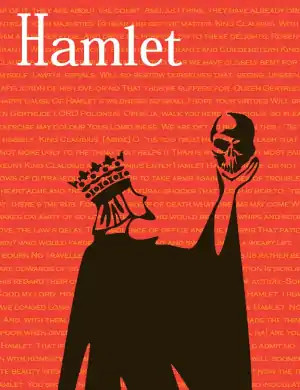

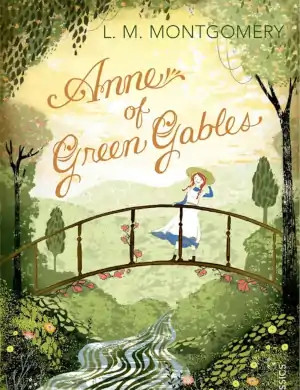
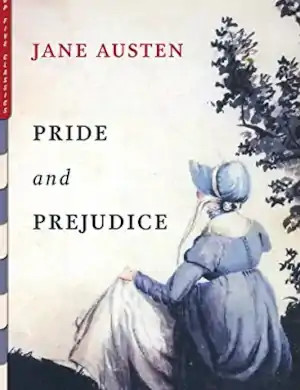
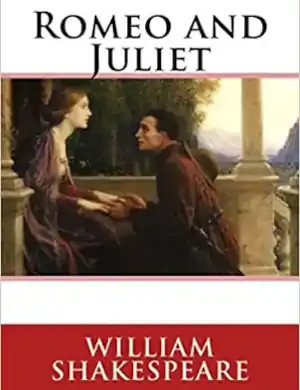
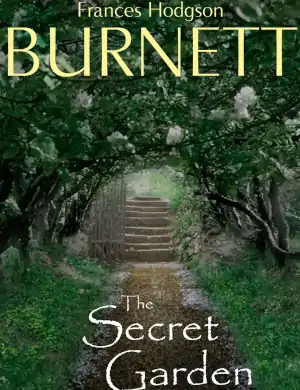
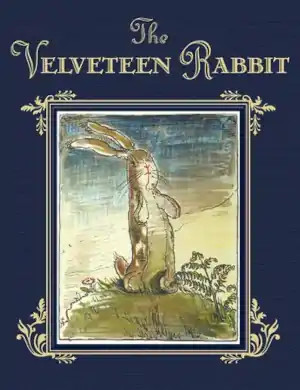


























Our 90 day money back guarantee
30 Minutes a Day + 5 Days a Week + 3 Months = GUARANTEE your child’s independent reading level will improve.*
* Measured by Lexile® level after completing the Power Challenge and by then reading Power Texts on LightSail's Platform.
Why Children Love LightSail
Come see what parents of struggling readers have to say about LightSail.
Shawna from Different by Design | Homeschooler of an Older Struggling Reader
LightSail is an excellent option for struggling readers. Every step of the way is designed in an accessible, multisensory format. And, best of all, it accommodates both reading level and maturity in it’s application.
Virginia from That Bald Chick | Homeschooler of a Child with Dyslexia and Vision Issues
LightSail also has tools for struggling learners. The line isolator tool is a game changer and I literally had tears when I found it. In addition to dyslexia, my daughter has a history of saccadic eye movement which makes reading even more difficult.
She did vision therapy for years and does eye exercises to control the rapid shifts of gaze, but when she’s tired, isolating lines is very helpful for her. She can change the number of lines that are isolated and she can change the color of the isolated lines and background. She can also have the lines read to hear. Game. Changer.
I am really excited about are the LightSail fluency tools. These tools allow your child to record themselves reading a portion of a book aloud and send it to you for assessment. Students can play their own recording back and re-record it until they are happy with it. It then allows you to listen to the recording with text on screen, so you can assess what they’ve omitted, inserted, mispronounced, substituted, repeated, or self corrected.
This is huge for us, since our 12yo has dyslexia and fluency is a struggle. It’s difficult to assess at times, though, because I either have to be reading over her shoulder (which she hates) or I have to have a second copy of the text (which can run expensive). This will enable us to work on fluency in a non-intimidating way.
Christine from The Homeschool House | Second-Generation Homeschooler
[T]here are several tools to make reading easier for the child who might struggle with distractions or overwhelm.
I found this particularly helpful for my 6-year old son who is still a budding reader.
You’re able to have them focus on just one word at a time and really reduce outside distractions.
Jill from Blessed Beyond a Doubt | Mom and Reading Teacher
One of my favorite aspects of LightSail is the TED Videos that you can assign to your students. I love to introduce my units or concepts with a video, so I found this very useful. You can assign a video on a topic to your students, and LightSail will give you suggested books on a topic.
I love the fact that the whole family can read the same book. This will create wonderful and intriguing conversations at the dinner table.
The program contains all of our favorite classics that we read growing up. It includes The Bobbsey Twins, Aesop Fables, Shakespeare, and Beatrice Potter, and so many more.
The price is a steal when you consider all that LightSail has to offer.
Erin from The Curriculum Choice | A Read-Aloud & Child-Led Homeschooler
An online language arts curriculum is no longer a mythical unicorn in the homeschool world. Now you can combine reading, writing, vocabulary, and fluency for pre-K through high school, all with one unique online program!
LightSail gives you access to some of the best books in the world. You don’t have to worry about multiple trips to the library, library fines, or if the unthinkable happens and the library gets shut down again!
[LightSail] is customizable through LightSail’s Childsafe Content Control Service, making it perfect for all types of homeschoolers, from classical to interest-led and everything in between. You can even turn off certain features if they do not work for your kids.
LightSail is entirely customizable to your child and their needs!
I think LightSail is a fantastic resource for homeschoolers from Pre-K through high school and an excellent option for struggling readers.
It’s perfect for interest-led homeschoolers because there are so many rabbit trails to follow. One book can lead to other similar articles, subjects, and videos. There is a wealth of information at your fingertips. Best of all, I don’t have to worry about my kiddos stumbling onto inappropriate content while diving deep into the subject of their choosing. That’s awesome.
Clare from Homeschool of 1 | A Homeschool Transplant from the UK
With over ten thousand books they are sure to find something they enjoy.
The writing program complements the reading assignments, and for us more importantly, they are in small chunks. So no struggling to write for hours at a time.
The first thing that caught my attention was how bright and colorful this program is.
What is great with Lightsail is that the child can record themselves reading aloud, and send the recording to us, the parents!
Ticia from Adventures in a Messy Life | Homeschooler of 3 Teenagers
The key to enthusiastic readers is having a wide variety of books available. However, building that personal library can get expensive. Even if you’re using the library, there are still late fees (come on admit you frequently have overdue books). Well, Lightsail for Homeschoolers has solved the problem of building your library with an online reading program you’ll love.
This site is a bonanza of books for any homeschoolers using Living Books, or Classical Education.
I like their search and the ability to not just search by grade level, but also topics of all sorts from history, author, current events (like political topics), themes, and more.
[T]he big thing that will appeal to homeschool moms of all stripes is the ability to pre-approve different types of books depending on different categories.
Elizabeth from That Homeschool Family | Mom of Reluctant Readers
"I am a busy lady. Throughout any given day, I’m homeschooling the kids, working on the blog, creating new educational resources, cooking, cleaning, running errands. Like so many other parents, I’m running around and taking care of approximately a billion things before my head hits the pillow each night.
Using the LightSail for Homeschoolers program for my own kids takes a load off my shoulders."
The LightSail for Homeschoolers Library is enormous. Not only does the library include texts on a variety of subjects and content areas, but videos, audiobooks, images, and even TED talks are all available at my disposal. It’s no longer necessary for me to scour the internet for appropriate videos or drive over to the library to borrow books (that, inevitably, will result in late fees because…life) to supplement our homeschool lessons. Now, I just need to log-in to my LightSail for Homeschoolers account, search by keyword or subject, and then assign my findings to my kids. As my kids would say, “easy peasy, lemon squeezy!”
LightSail parents have real-time access to meaningful data about their children’s reading and writing trends, comprehension, and growth that allows them to guide, create, and enhance the learning experience.
LightSail for Homeschoolers IS a language arts platform, but I absolutely love that I can take advantage of its offerings to supplement and teach my kids in all of their homeschool subjects.
Heather from Living the Full Life | A SAHHM (stay-at-home/homeschooling mom) of 4
Do you remember 2020? . . . Oh, how I wish I knew of LightSail – a homeschool online reading program during those months of not having access to books.
Another great function tool of LightSail is selecting if you want faith-based material offered, and if you do, you are then able to include what faiths.
Destiny from Some Call It Destiny | Homeschooling Since 2014
My kids go through books so fast! Having tons of books available for them to read without having tons of library books getting lost at my house is a big win. When they finish a book, there is always another one available.
I’m probably a little more excited about LightSail’s ChildSafe Content Controls than a normal person should be, but well, this is one company that got it right.
What I like about their ChildSafe Content Control is the different levels of management. I can choose to completely block entire categories if I know my child is not yet ready for them or if they are simply controversial topics. But, I can also choose to have my child ask permission and this would allow me to make decisions on a case-by-case basis.
One of the biggest benefits of an online language arts program that includes all the books online, is you can easily take it with you. Beautiful day out? Head outside. Traveling? No problem. Being online makes it easy to adapt to where you are.
These features along with LightSail’s four pillars of literacy (reading, writing, vocabulary, and fluency) make LighSail for Homeschoolers the best online language arts platform I have found. Because LighSail uses active home educators in developing their content, they know what we as homeschoolers are looking for.
Sarah from Homeschooling 4 Him | Homeschool Mom with 10+ Years Teaching Experience
I love that this program is based on science and that it is already proven to be effective with millions of students. As a teacher with a degree in education, I am always looking for ways to incorporate the science of how kids learn best in my homeschool. I was excited to see all the ways that LightSail for Homeschoolers uses the research to help kids learn better with this platform.
LightSail’s platform is an effective reading program that is designed based on the science of reading and writing and is already used by more than 5 million students in public schools. Now a team of home educators has customized LightSail for home use to create an amazing homeschool curriculum!
The library inside LightSail for Homeschoolers is the best thing about this program! The collection includes over 12,000 books and multimedia resources from publishers including World Book and Lerner Publishing. There are also faith-based collections and classic homeschool books.
I like that LightSail leaves it up to individual parents to decide what content they would like their children to be able to access.
The LightSail parent dashboard is a really helpful tool for homeschool parents. The dashboard allows me to see at a glance exactly which books my kids are reading. I can see which assignments they have completed and where they are in the learning process. I can also see their Lexile scores, and how many questions they answered correctly in the books they have read.
It is great to be able to create a customized goal for each child, and then assign a reward from me that will display when they complete their goal. I love that parents can create both the goals and the rewards for their kids themselves. This is such a meaningful way to celebrate their kids’ hard work.
My son has always had a love of reading, but he tends to read quickly and has a hard time remembering what he has read. I noticed that the comprehension checks forced him to slow down and think about what the text was saying. I am already seeing improvements in his reading comprehension, and I know that this literacy program is making him a better reader.
Cindy from Homeschool Mom Extravaganza | Former Teacher & Homeschooling Mom of 2
"When reading in LightSail, the minutes read are automatically tracked and recorded. This is super helpful for me because record keeping is not my strength.
MOM-WIN At the end of the year, I’ll have a record of all the online books read (including minutes and pages)."
LightSail records the books, minutes and pages read. The gradebook keeps track of assessments. At the end of the year it’ll be there ready and waiting!
RJ (third grade) loved recording her voice and listening to herself reading.
Using ChildSafe Content Controls, I am able to block or require approval for books based on content. For example, I’ve blocked content that includes scary imagery from my third grader. She has too many scary dreams!

We're here to help!
Find answers to frequently asked questions or contact us for more support.
You can email us at
How many parent accounts are included with a childs license?
I am part of a homeschool group and we share teaching responsibilities. How can I access those accounts?
Is your platform only Faith-Based?
If I want to purchase a book with your E-Commerce store, do I have to buy a copy for each license I purchased?
How does LightSail’s childsafe protection work?
At LightSail, a parent’s ability to oversee their child’s online experience and align it with their faith and values is of the utmost importance. To this end, LightSail contains an entire suite of parental control features and never-before-seen ChildSafe Content Controls giving parents ultimate peace of mind.
These content controls contain dozens of nuanced subcategories for potentially objectionable material based on both maturity and religious factors. Then, it shows parents if a book contains a reference to any of those subcategories and allows them to block or allow single titles or entire subcategories for each child individually. Our ChildSafe Content Controls offer unprecedented insight into and control over the content your children consume without the need to read every book in advance.
- Block or allow individual pieces of content.
- Block or allow entire subcategories of content.
- Require a child to request parental approval before opening entire subcategories of content.
- Block, allow, or require requesting parental approval for all Classics library content.
- Block or require requesting parental approval for all unrated content.
Click here to learn more about all of our parental controls.



